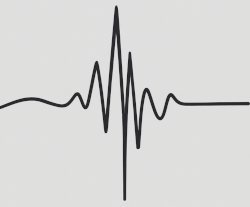1834 CE Fellahin Revolt Earthquake







Amid the
1834 CE Fellahin Revolt,
Jerusalem was shaken by a
major earthquake at 6am on the 26th of May. An
Anonymous Welsh Traveler
recorded his eyewitness account, calling it one of the
“strongest ever felt in Palestine.” He reported that it
destroyed many houses, “levelled … that part of the
[Jerusalem] city wall which passes the temple of the
Muhammadans [likely
Al-Aqsa Mosque
],” and killed many
residents. He added that “for ten days earthquakes continued
to rock the city,” though none matched the first shock.
A second eyewitness was the monk
Neophytos, who specified
further details. He wrote that the earthquake “lasted but
three seconds, but it was so violent that the
dome of the Catholicon
was cracked in seven places and all the plaster
fell off.” He added that “the big dome of the
Church of the Holy Sepulchre
was shaken,” but not greatly damaged, and
that “many big houses in Jerusalem were cracked and many
fell.” He further recorded that “part of the city wall, near
the
Mosque of Omar
, fell,” that minarets collapsed in
Jerusalem and on the Mount of Olives, and that the dome of
the
Shrine of the Ascension
also fell.
Writing a few years later,
Baptisin Poujoulat summarized
the shock’s impact: “At the same time, the plague and a
violent earthquake broke out in Jerusalem; the holy city was
plunged into the most appalling consternation.” In 1853,
Titus Tobler wrote that
“in July 1834, a strong earthquake threw down several
piles
,
and also blew out one part of the wall by a Mosque [possibly
Al-Aqsa Mosque], and threatened the collapse of the
Latin Roofters
.” Finally, the History of the Greek Orthodox Patriarchate of
Jerusalem notes succinctly that “the Dome of the Catholicon
was partly destroyed by an earthquake [in 1834] and repaired
by the Greeks,” a statement that confirms the damage reported
by Neophytos and attests to its subsequent restoration.

